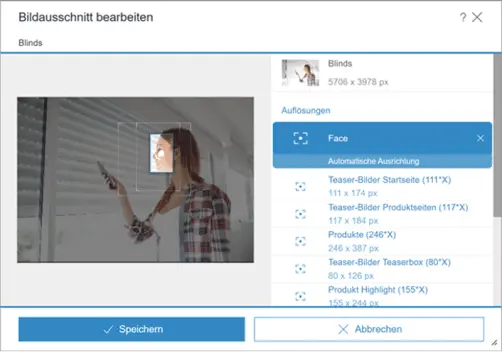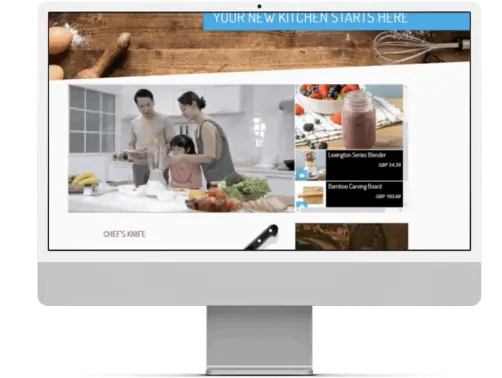B2B Commerce Has Changed – It’s time for Marketers to Change with It

Content is king in the race to win buyers’ hearts and minds. As online shopping has grown rapidly in the past two years, B2C e-commerce companies have recognized the importance of creating compelling content-driven experiences to keep customers engaged. Now there’s a similar shift taking place in the B2B market, as customer experience takes center stage in a whole new way. With 2/3 of B2B buyers now opting for digital self-service, B2B marketers are embracing content-driven commerce as a critical path to delivering an enhanced CX throughout the online buy cycle, deepening customer engagement and maximizing sales.
In fact, the trend toward digital buying is creating enormous competitive opportunities for those B2B organizations who are able to adapt quickly, and deliver the superior, personalized digital buying experiences customers demand.
You can read more about this in our new ebook: Why Marketing-Driven Digital Experiences Will be the Growth Lever for B2B .

As result of this shift to digital self-service, customers engage with sales much later in the buying process, if at all, so the onus is on marketing to support and optimize the sales journey and drive revenue streams. In B2B, sales decisions tend to be significantly more complex, and high-value than B2C, and without Sales to guide the process, buyers are looking for the information and tools they need to evaluate, compare and understand products directly online. Marketers need to be ready to enable and support the decision-making process at every stage.
According to McKinsey, 35% of buyers are willing to spend big through online sales channels - $500,000+ or more in a single transaction (up from 27 percent in February 2021) . The sheer size of the opportunity is driving the pace of innovation in B2B commerce and the move towards content-driven commerce experiences.
But the implementation of a content-focused e-commerce marketing strategy relies on Marketing’s ability to quickly update content and push it out to multiple channels in a matter of minutes. This type of flexibility, agility, and speed is often in direct opposition to traditional monolithic e-commerce marketing platforms. Organizations that are saddled with these “one-stop shop” systems simply do not have the tools and resources that modern marketing teams need to successfully compete in the new digital-first buy cycle.
Fortunately, alternatives exist. Businesses don’t need to stay bound by the limitations of their monolithic commerce solutions. Instead, organizations can transition to a composable, best-of-breed model which enables them to build on the transactional capabilities of their existing commerce engines by adding a fully-featured B2B e-commerce CMS, and other tools, to create the ideal e-commerce system to support their needs.
By adding a hybrid headless CMS – such as Crownpeak – to your commerce system, B2B marketing teams have all the capabilities they need to orchestrate inspiring commerce experiences directly (without support from IT) and become effective revenue drivers for their company.
Why monolithic commerce platforms are holding B2B marketers back
Before we dive into the advantages of using a using a hybrid headless CMS to drive your successful e-commerce strategies, let’s step back and briefly review the limitations of monolithic e-commerce platforms for marketers (you can read more about this in our blog Why Headless Content-Driven Commerce is the Future of B2B) :
- Transaction-focused, not CX focused: Traditional, monolithic commerce platforms were specifically designed around transactions, not content and customer experience. As a result, the built-in CMS capabilities tend to be rudimentary, missing the key enterprise features necessary to support and accelerate modern marketing practices. This includes workflows, content reuse and complex content scenarios. These platforms also only offer a limited number of templates and modules, and can be difficult and expensive to customize.
- Inflexible and limited: In today’s fast-changing markets and technology landscape, it’s well-known that no single vendor is capable of providing optimal functionality across services and applications. Without third-party integrations, monolithic platforms significantly constrain a company’s ability to meet changing customer demands and deliver personalized, efficient and high-converting customer experience across the latest platforms and channels.
- Slow and IT-dependent: Traditional e-commerce systems are typically not user-friendly and create cumbersome lag times when delivering content to customers. The original benefits of a monolithic platform – simplicity and stability – have become a serious handicap in today’s rapidly evolving landscape. Nowadays, marketing teams need agile and flexible systems that don’t rely on IT teams to make changes or launch new experiences. Instead, B2B marketers need to be able to quickly create and update rich omnichannel buying experiences with the click of a few buttons.
As more and more B2B companies realize the speed and adaptability advantages of composable, content-driven e-commerce solutions, those tied to monolithic solutions risk being left behind.
How a hybrid headless CMS changes the game for B2B marketers
Let’s start by briefly reviewing how a composable commerce architecture works. In this approach, the e-commerce marketing platform (this could be your existing commerce system or a new headless commerce system) and a headless CMS are connected to each other via APIs, but are decoupled from the front-end presentation layer, leaving the frontend UI to be flexibly managed by a Progressive Web App (PWA) or Single Page Application (SPA).

In this model the headless CMS provides marketing teams with the easy-to-use tools they need to quickly create compelling content then push it out to all the front-end customer channels at one time – website, mobile, displays and IoT devices – without having to rely on the IT department for development and implementation. This keeps content moving at the speed of the market and culminates in a powerful omnichannel experience for the customer.
Delivering next-generation buying experiences with Crownpeak
If you’ve been trying to drive your e-commerce marketing strategy with a monolithic, inflexible e-commerce platform, making the shift to Crownpeak’s composable, hybrid headless CMS will feel like you’ve gone from steering a bus to driving a sports car – with speed, agility and the responsiveness to turn on a dime.
That’s because Crownpeak’s hybrid headless CMS puts marketers in the driver’s seat, with a super-charged, enterprise-grade content management engine that enables them to be more creative and responsive to shifting market and customer needs – without having to make a pit-stop at the IT department at every turn. In short, the hybrid headless CMS takes your content marketing strategy from zero to sixty in a very short amount of time – and that helps you get a jump on the competition.
To give you a flavour of what you can accomplish with Crownpeak’s Content-Driven Commerce solution for your e-commerce marketing plan, below are three e-commerce marketing examples showing how marketers can leverage user-friendly tools to quickly orchestrate compelling, content-driven commerce experiences that deepen customer engagement, drive sales and increase revenue while turning customers into loyal fans.
1. AI-Powered Omnichannel Image Optimization:
Fueling image-rich omnichannel experiences can be incredibly time-consuming and expensive, as marketing teams or their agencies have to manually adjust and optimize graphics for a wide variety of content types, channels, and e-commerce campaign ideas.
This all goes away with Crownpeak’s AI-Powered Omnichannel Image Optimization, designed to speed campaign delivery, save costs and ensure optimum omnichannel results every time.
Here’s how it works:
- Editors use the tool to define a focus point in an image, which is then “protected” as the system intelligently auto-crops the photo or graphic for each use case. You can opt to store the same image in multiple folders and it will be cropped differently based on the parameters defined for each specific folder.
- There are two modes that editors can take advantage of based on their needs:
- Semi-auto: This allows AI to suggest points of interest and the editor can simply click to choose the one that works best. The images are then cropped as needed to fit the required dimensions, using the golden ratio.
- Full-auto: AI automatically detects a point of interest, such as a face and crops as necessary around that defined point, again, using the golden ratio.
- In addition, the tool uses AI to help you organize your assets too. The time spent tagging and filing the image variants is eliminated.
AI is a deep-learning technology that is constantly working to understand your requirements, becoming more precise and efficient over time.




2. Product Listing Optimizer:
Product listing pages can be hugely time-consuming to manage effectively. Editors have to review them frequently to ensure the layouts are optimized for the current number of items displayed. For example, as items sell out, they are automatically removed by the e-commerce platform which can result in gappy layouts that look broken or incomplete. This is especially true for “hero” products that are featured predominantly and often are in high demand. As supply ebbs and flows, editors are constantly having to re-edit sites to ensure available products are highlighted and the layout stays consistent. This can feel like a never-ending and tedious process for e-commerce companies, but it’s a critical one to ensure an optimal customer experience.
With Crownpeak’s Product Listing Optimizer, the page layout automatically reconfigures and optimizes to fit the number of images/products shown. This feature integrates seamlessly with the backend e-commerce system so editors don’t need to maintain vigilant watch over items as they sell out or are restocked. This is a huge time saver for companies, eliminating the need for manual edits and layout reviews and ensuring the optimum CX is delivered at all times.

3. Shoppable Videos:
Among the different types of e-commerce marketing, video is a fantastic tool for showcasing your products – especially when it comes to complex B2B product offerings – but it can often appear disconnected from the sales experience. With Crownpeak’s Shoppable Video feature you can fully harness its potential within the buying experience. Now you can include contextual product teasers, information and purchase links directly within your videos, maximizing customer engagement and driving sales.

This is only the beginning. As you create your e-commerce marketing strategy 2022, there’s nothing like an e-commerce marketing strategy case study to see how companies are successfully using these and other tools – take a look at these inspiring B2B e-commerce examples to spark your ideas for delivering great customer experiences across multiple e-commerce marketing channels.
Convert visitors with shoppable, content-driven experiences
With Crownpeak Content-Driven Commerce , marketers can take the B2B shopping experience to a new level, with a tailored, customer-focused approach to your business and products. In B2B, even more so than B2C, the buying process can be complex – Crownpeak gives you the tools you need to support, convince and convert your customers throughout the sales process, and keep them coming back.
Interested in learning how content-driven e-commerce marketing strategies can build trust and loyalty with your customers, while also increasing revenue? Speak to an expert today →